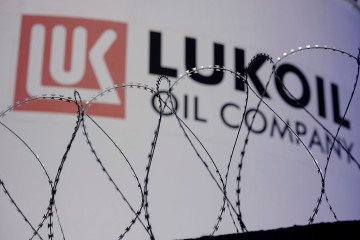- Category
- Business
Foreign Firms Lost $170 Billion in Russia. Here’s Why Returning Could Be Even Worse

As US efforts to broker a ceasefire in Russia’s war against Ukraine gain momentum, whispers of American and European businesses returning to Russia are growing louder. But they seem to ignore one thing: Russia has spent the last three years plundering foreign companies.
Following Russia’s full-scale invasion of Ukraine in February 2022, many international businesses ceased operations in Russia. After witnessing the atrocities in Bucha, Irpin, Hostomel, and other towns in the Kyiv region in April 2022 — and realizing that Russia had no intention of stopping — some companies opted to leave the Russian market entirely. Their choices: sell local assets to management or other players.
But Moscow had different plans. Russia sought to offset the reputational damage and isolation caused by the mass exodus of foreign businesses, and it did so at the expense of those very companies. The rules introduced in 2023 struck a severe blow:
A mandatory 50% discount on the value of divested assets
A “voluntary contribution” of 10% on the sale price, which could rise to 90% if the business was sold at a steep loss
Up to 10% in additional profit taxes for 2021–2022
A special permit, required to transfer capital abroad
Companies that exited early, right after the invasion began, faced less onerous fees. But once Russia realized it couldn’t compel American and European firms to stay, it drastically raised taxes, in part to finance its war in Ukraine.
Yet even recovering half the value of an asset turned out to be a relatively lucky outcome. In 2023, the Kremlin began effectively nationalizing some US and European assets, transferring them to the “temporary management” of a government agency called Rosimushchestvo. Officially, Russia denied these were nationalizations, claiming the owners technically remained the same and that only management had changed. In practice, the takeovers proved extremely costly: Carlsberg Group, for example, was prevented from selling its business to a ready buyer. The same happened to Danone. Eventually, both companies found buyers, but the losses were massive. Carlsberg sold its assets for just over €300 million, despite a valuation of over €1 billion. Danone’s asset lost 56% of its value.
The same pattern affected many major energy companies from the US and Europe, including British Petroleum, ExxonMobil, Fortum, TotalEnergies, and Uniper. Many could not find buyers or were forced to sell at deep discounts. In some cases, sales agreements were blocked at the highest level by Russian leader Vladimir Putin himself.
How much has foreign business lost?
Russia inflicted $170 billion in losses on international companies between 2022 and 2024, the Kyiv School of Economics reported. Of this, $167 billion came from asset write-downs, while $3 billion resulted from “exit taxes.” The countries whose businesses suffered the most:
United States — $46 billion
Germany — $44.5 billion
United Kingdom — $35.1 billion
France — $12.1 billion
Austria — $6.7 billion
Finland — $5.1 billion
The energy sector took the hardest hit, with write-downs estimated at around $60 billion. The biggest corporate losses were recorded by:
British Petroleum — $25.5 billion
Uniper — $22 billion
Fortum — $4.07 billion
ExxonMobil — $4 billion
Renault — $2.4 billion
Société Générale — $3.3 billion
These distressed asset sales, often at steep discounts, typically benefited entities closely tied to the Kremlin or with strong influence in Moscow. The nationalization of energy assets directly served Russian state interests. At least 30 major companies had their businesses seized in this way.
Since the start of Russia’s full-scale war, 481 companies have fully exited the country's market. Another 1,357 have downsized operations, suspended investment and marketing, or are planning to leave.
Any company considering a return to Russia should remember: assets can be seized without warning, without legal proceedings, and handed over to Kremlin-connected interests. What once promised millions in profit can swiftly become billions in losses and write-downs.

-29a1a43aba23f9bb779a1ac8b98d2121.jpeg)
-4390b3efd5ecfe59eeed3643ea284dd2.png)



